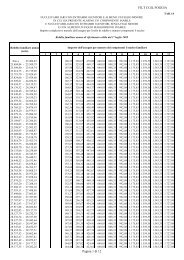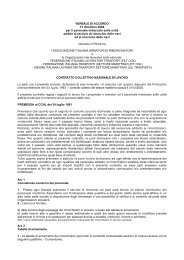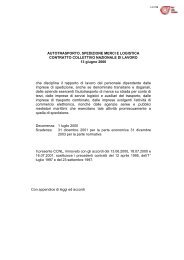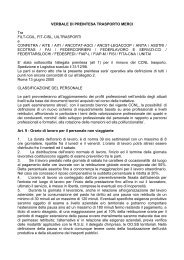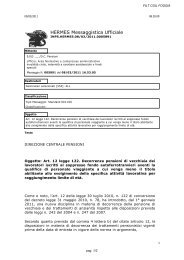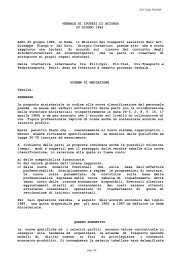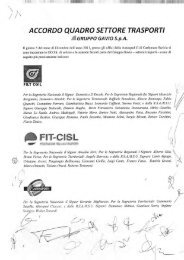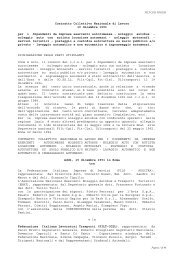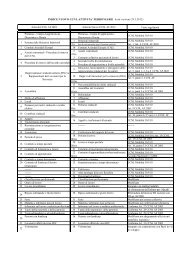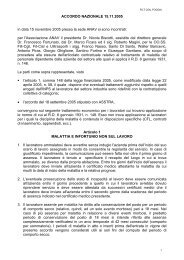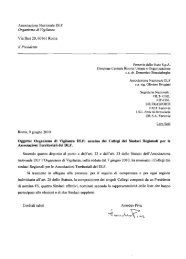Outlook for Air Transport to the Year 2025 - FILT CGIL Foggia
Outlook for Air Transport to the Year 2025 - FILT CGIL Foggia
Outlook for Air Transport to the Year 2025 - FILT CGIL Foggia
- No tags were found...
You also want an ePaper? Increase the reach of your titles
YUMPU automatically turns print PDFs into web optimized ePapers that Google loves.
Chapter 5. Forecasts of <strong>Air</strong>line Traffic <strong>to</strong> <strong>the</strong> <strong>Year</strong> <strong>2025</strong> 4122. By <strong>the</strong> year <strong>2025</strong>, airlines of <strong>the</strong> Asia/Pacific region are expected <strong>to</strong> increase <strong>the</strong>ir share of air freighttraffic by more than 10 percentage points <strong>to</strong> slightly over 46 per cent of <strong>to</strong>tal world freight, a share well abovethat of any o<strong>the</strong>r region.ACCURACY OF PREVIOUS FORECASTS23. Previous ICAO <strong>for</strong>ecasts tended <strong>to</strong> somewhat overestimate <strong>the</strong> actual passenger traffic growth whichremained never<strong>the</strong>less within <strong>the</strong> <strong>for</strong>ecast margins, while freight traffic growth <strong>for</strong>ecasts mostly matched <strong>the</strong>actuals. The accuracy of <strong>the</strong> most recent <strong>for</strong>ecasts published in 2001 and 2004 could not be assessed given that<strong>the</strong>ir time horizon extends <strong>to</strong> 2010 and 2015, respectively. The accuracy of <strong>the</strong> o<strong>the</strong>r sets of ICAO long-termpassenger and freight <strong>for</strong>ecasts is depicted in Figures 5-3 and 5-4. The last set of <strong>for</strong>ecasts shown on both figureswas developed in 1997. Despite several un<strong>for</strong>eseen events including <strong>the</strong> Asian economic crisis in <strong>the</strong> second halfof 1997, <strong>the</strong> events of 11 September 2001, <strong>the</strong> war in Iraq and <strong>the</strong> SARS epidemic in 2003, actual passengertrafficgrowth <strong>for</strong> <strong>the</strong> period 1995–2005 was very close <strong>to</strong> <strong>the</strong> most likely <strong>for</strong>ecast, due in part <strong>to</strong> <strong>the</strong> speedyrecovery in 2004 and 2005. This was not <strong>the</strong> case <strong>for</strong> actual freight traffic growth which was close <strong>to</strong> <strong>the</strong> low<strong>for</strong>ecast.SUMMARY OF AIR TRAFFIC FORECASTSBY OTHER ORGANIZATIONS24. Some recent long-term <strong>for</strong>ecasts by major airframe and engine manufacturers of growth in worldscheduled traffic are given in Table 5-6. These <strong>for</strong>ecast growth rates are in <strong>the</strong> range of 4.8 <strong>to</strong> 5.0 per cent perannum <strong>for</strong> passenger-kilometres, with freight <strong>to</strong>nne-kilometres generally <strong>for</strong>ecast <strong>to</strong> grow at a slightly higher rate<strong>for</strong> <strong>the</strong> period ranging from 2005 <strong>to</strong> 2026.2016Actual High Low LikelyGrowth (%)1284Forecast period01967–80 1970– 80 1982– 92 1985– 95 1988– 2000 1992– 2003 1995–2005Forecast publication 1968 1971 1983 1986 1989 1995 1997Figure 5-3. ICAO <strong>for</strong>ecast accuracy (growth of passenger-kilometres per<strong>for</strong>med)





